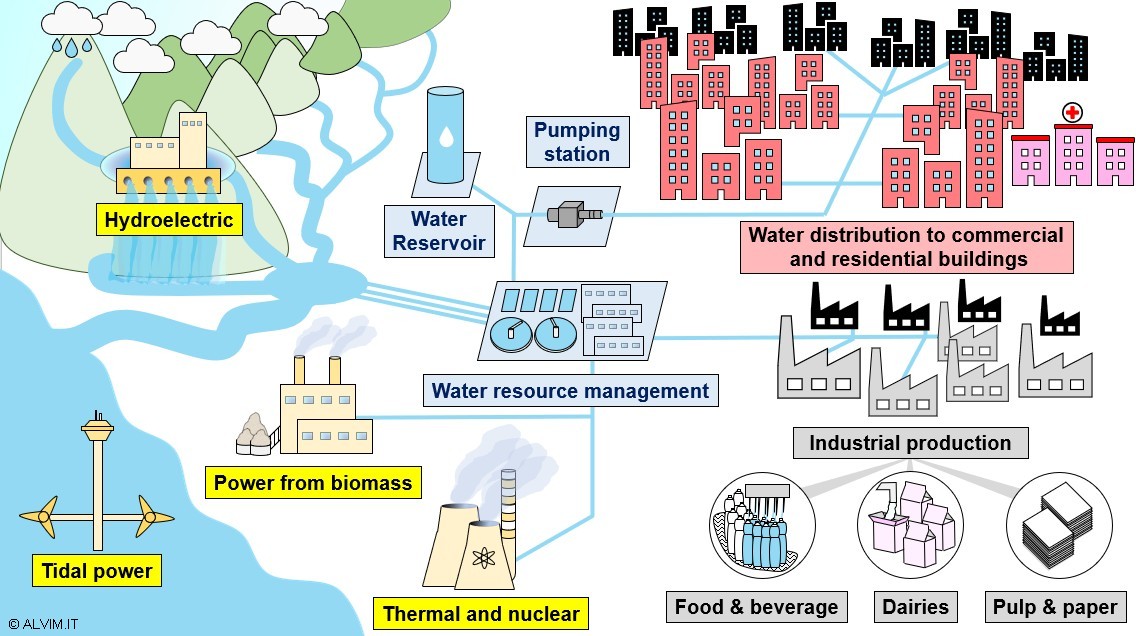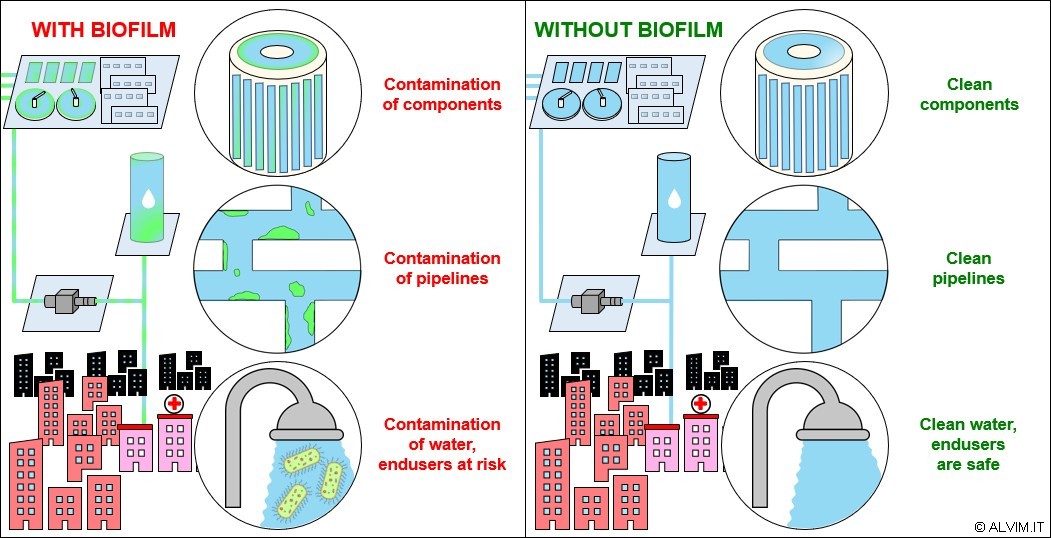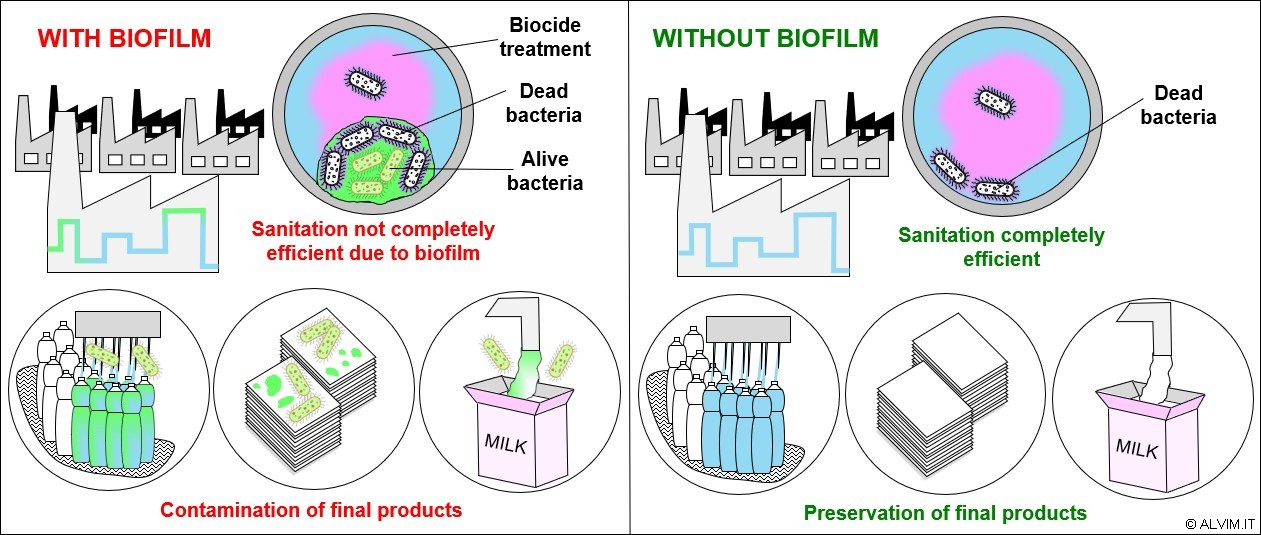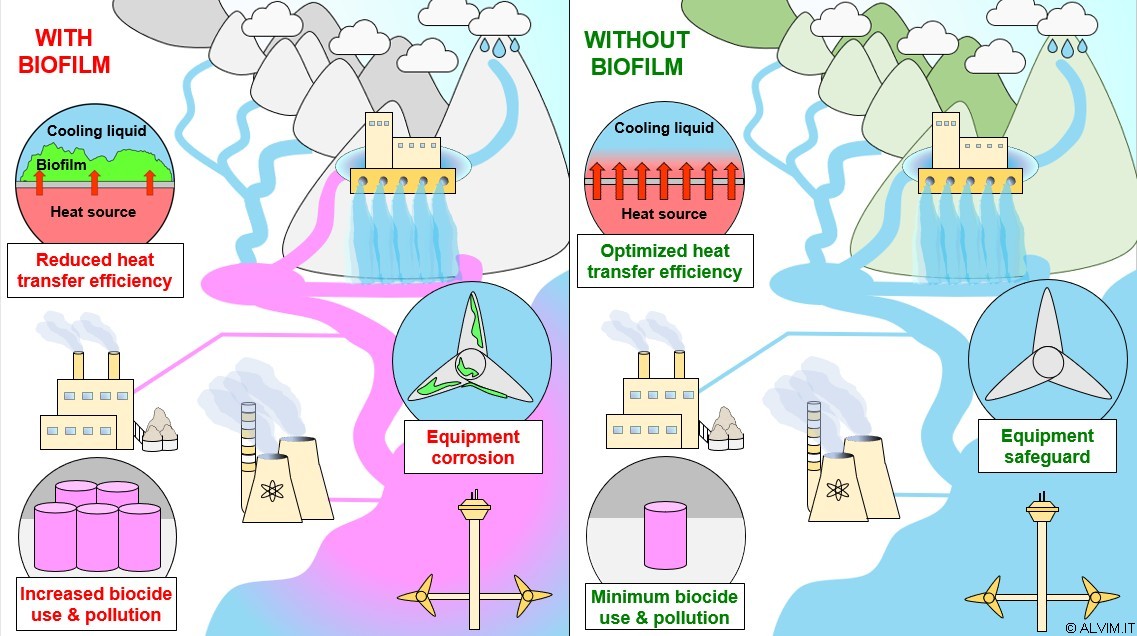Safe Water in Smart Cities [Download this white paper as PDF file]
The Smart City approach refers to the application of innovative technologies to efficiently manage assets, services and resources at residential, commercial, industrial and environmental level. It comprises the use of sensors, and other electronic devices, to monitor many different parameters. This approach is particularly important when applied to water networks, because of the central role of water in our society. Indeed, this fundamental resource guarantees our survival (drinking, cooking, etc.) and quality of life (cleaning, heating, etc.). While all industries make use of it, some specific sectors, such as Food&Beverage, Pulp&Paper and Dairies, consume large amounts of water in their production cycles. With an increasing demand due to the continuous growth of urban and industrial areas, also power generation heavily relies on water, both as a source of energy (kinetic, thermal, etc.) and as a cooling medium. Many more examples could be done to describe the importance of water in our cities. As a result, a complex network of connections is needed to manage water treatment, use, distribution and correct disposal (see figure below).

Both human and environmental health are strongly dependent on the preservation of water. In order to ensure it, monitoring technologies play an important role. Indeed, the application of smart technologies allows to optimize water treatment and to preserve this precious resource. With this aim, different sensors and other devices are commonly employed to monitor a multitude of parameters in water systems. These include temperature, pH, hardness, flow velocity, ORP (oxidation-reduction potential). Unfortunately, microbial biofilm monitoring is often overlooked. The term biofilm refers to the layer of microorganisms (bacteria, fungi, microalgae, etc.) that forms on any surface in contact with water and other liquids. This slimy environment is particularly suitable for microorganisms, indeed 90% of bacteria live in biofilms, not free in the liquid. This is the ideal home for pathogens too.
The low attention paid to microbial biofilm is a big weakness of the current approach to water monitoring. In fact, microbial biofilm is the cause of many important problems in both urban and industrial water systems. These include corrosion, energy loss, equipment failure, reduced performance, resistance to antimicrobial treatments and many more.
One of the most serious problems affecting water distribution networks is the proliferation of dangerous microorganisms such as Legionella pneumophila, Pseudomonas aeruginosa and Listeria. These pathogens, widely distributed in water environments, can proliferate in the biofilm that grows inside water treatment plant components, pipelines and, finally, residential water taps and showers (see figure below).

Not only direct water consumption, but also inhalation of aerosol can lead to an infection. Legionellosis, the waterborne disease deriving from Legionella bacteria, accounts alone for several hundred thousand cases and many thousands of deaths per year, worldwide. Since bacterial slime is the ideal environment for Legionella to proliferate, as long as there is biofilm, no water system can be considered safe. Once these bacteria are released in the water, they can travel - even for very long distances - with the small droplet of water sprayed by showers, fountains and cooling towers. Among water treatment professionals and building managers there is a raising awareness on these topics, and on prevention. Noteworthy, most urban water distribution systems are more than one-century old. Even worse, the approach to urban water treatment is, at least, twice as old. While the recent COVID-19 outbreak encouraged proactive and preventive approaches toward the safeguard of water, much more could be done in this direction. New water infrastructures will be shortly revised, or rebuilt, in the years to come. Ensuring they will include all appropriate prevention technologies is a matter of global health.
As a matter of facts, waterborne pathogens, and other microorganisms living within biofilm, are sheltered from the action of biocides. Indeed, this microbial layer shows an increased resistance to sanitation treatments, thanks to the protective effect of self-produced EPS (exopolymeric substances), where this bacterial community is embedded. As a consequence, the eradication of biofilm is considerably more difficult, compared to the removal of free-floating bacteria.
For this reason, common sanitation treatments are not completely effective in removing biofilm. Moreover, the approach to these treatments is often affected by several errors, as it happens for residual chlorine measurement, discussed in another white paper. As a consequence, chemicals are commonly overdosed, with a big waste of time, money and resources - and, often, without even getting the desired results. This frequently results in the contamination of final products (see figure below), that can lead to waste or recall of a batch - or, even worse, a possible threat to consumers' health.

Biofilm is a technological problem also when it comes to the loss of energy efficiency, as discussed in another white paper. Since biofilm is even more insulating than mineral deposit, it seriously reduces the efficiency of heat exchangers, that are used in a wide range of applications in urban and industrial water systems. Another issue that affects most pipelines of buildings and utilities is corrosion. All metal surfaces covered by bacteria are subject to Microbially Influenced Corrosion (MIC). When it is not readily eliminated, biofilm greatly accelerates the rate of corrosion of the colonized surface, leading to degradation of structures, reduced performance and loss of efficiency. Optimizing biofilm removal allows to prevent these problems and, at the same time, to limit the environmental impact of biocide treatments (see figure below). Indeed, both the chemicals used to eradicate biofilm and their byproducts represent a threat to ecosystems, once the treated water is released in the environment. Limiting the amount of biocides used to eliminate bacteria, reduces both the efforts required for wastewater treatment and the environmental impact of such chemicals. To this aim, the optimization of biocide dosage allowed by biofilm monitoring provides the best results.

For all of these reasons, in the future a smart, optimal approach toward water treatment shall implement biofilm monitoring at all levels of water infrastructures.
ALVIM offers the most reliable tools for the prevention of biofilm and related issues. Its innovative technology specifically monitors biofilm growth, online and in real time. This approach allows to check the effectiveness of biocides, and to optimize the treatment based on the real needs.
|
Do you have a similar problem with biofilm?
|





